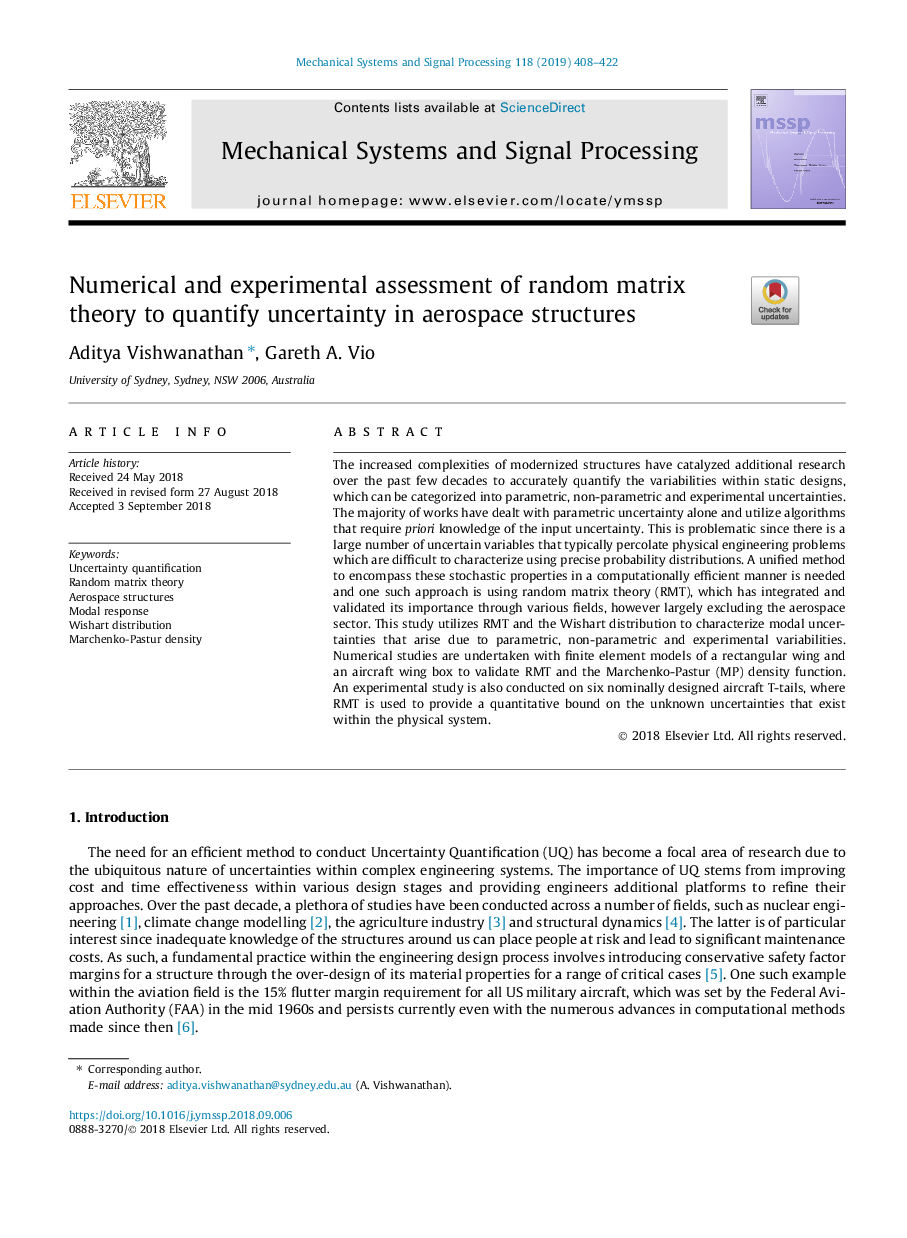| Article ID | Journal | Published Year | Pages | File Type |
|---|---|---|---|---|
| 10132884 | Mechanical Systems and Signal Processing | 2019 | 15 Pages |
Abstract
The increased complexities of modernized structures have catalyzed additional research over the past few decades to accurately quantify the variabilities within static designs, which can be categorized into parametric, non-parametric and experimental uncertainties. The majority of works have dealt with parametric uncertainty alone and utilize algorithms that require priori knowledge of the input uncertainty. This is problematic since there is a large number of uncertain variables that typically percolate physical engineering problems which are difficult to characterize using precise probability distributions. A unified method to encompass these stochastic properties in a computationally efficient manner is needed and one such approach is using random matrix theory (RMT), which has integrated and validated its importance through various fields, however largely excluding the aerospace sector. This study utilizes RMT and the Wishart distribution to characterize modal uncertainties that arise due to parametric, non-parametric and experimental variabilities. Numerical studies are undertaken with finite element models of a rectangular wing and an aircraft wing box to validate RMT and the Marchenko-Pastur (MP) density function. An experimental study is also conducted on six nominally designed aircraft T-tails, where RMT is used to provide a quantitative bound on the unknown uncertainties that exist within the physical system.
Keywords
Related Topics
Physical Sciences and Engineering
Computer Science
Signal Processing
Authors
Aditya Vishwanathan, Gareth A. Vio,
